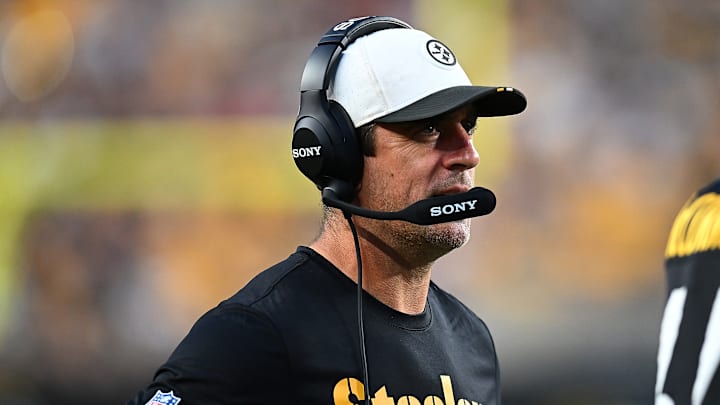There wasn’t a whole lot to love about the Pittsburgh Steelers' offense in 2024. It was certainly improved with Arthur Smith as the offensive coordinator, but the lack of star power and subpar play at quarterback ultimately fueled the disappointing end to the season.
Luckily, the 2025 season will kick off soon, and the hope is that Aaron Rodgers will give the offense the jolt it needs to take a step towards competing against the top teams in the AFC. Of course, Rodgers comes with his own baggage at 41 years old.
Still, for all the curiosities Rodgers and Smith’s pairings bring, there’s one aspect beyond their past successes elsewhere that could point toward more success in the offense than many might expect. According to ESPN Research, Rodgers was the second-most efficient deep passer in the NFL in 2024.
What Rodgers’ deep passing efficiency could mean for the Pittsburgh Steelers in 2025
Why is that significant? Beyond the obvious boost in big-play possibilities, Rodgers' efficiency down the field plays into Smith’s base offensive game plan perfectly. Despite his better intentions, Smith’s play-calling is rather predictable on the surface. He runs outside zone to set up play action over the top, then bombs away.
It’s why the offense was more efficient and explosive with Russell Wilson under center in 2024. Wilson has great deep-ball accuracy, and the Steelers reaped some benefit from that last season. But even Wilson wasn’t hitting the mark like Rodgers.
The hard stats from ESPN Research on Rodgers revealed that he had a 99.5 QBR on passes at least 25 yards downfield last season in New York. It might seem surprising since the Jets weren’t very good, but Rodgers was more efficient, especially near the end of the season, than most give him credit for.
Of course, the difference is now, Rodgers shouldn’t be playing from behind nearly as often. If Pittsburgh can establish the run in most games, they’ll allow for Rodgers and Smith to be more calculated than desperate when dialing up deep shots downfield. Theoretically, that would allow Rodgers to be even more efficient on deep passes.
READ MORE: Steelers’ obsession with 2026 NFL Draft quarterbacks is already undeniable
Of course, one notable discrepancy is his weaponry. In New York, Rodgers had Davante Adams and Garrett Wilson, two exceptional deep threats. In Pittsburgh, Rodgers has some unknown variables to work with. DK Metcalf would figure to be an excellent deep threat, but he is coming off a season with a 36.6% contested catch rate, which ranked 75th in the NFL last season, a bad sign for a receiver with his physical stature down the field.
Still, Metcalf had an average depth of target at 13 yards last season, with most passes traveling an average of 11 yards before reaching him. He is certainly more lethal down the field than for short, underneath plays, so long as he’s open.
Calvin Austin III is the deep threat that Steelers fans are hoping will finally be unlocked with Rodgers in town. In his first two playing seasons, only 48% of his catches have been deemed successful by Pro Football Reference, which is a harsh way of calculating that he hasn’t picked up great yardage when he’s been able to haul in the passes sent his way.
Last year, Smith's offense was somewhat handcuffed by the personnel. He didn't run nearly as much outside zone as expected, and the play-action game suffered as a result. While there are still certainly question marks in the personnel this year, the obvious upgrades should prove the difference, especially if Rodgers is the rising tide that raises all ships.
